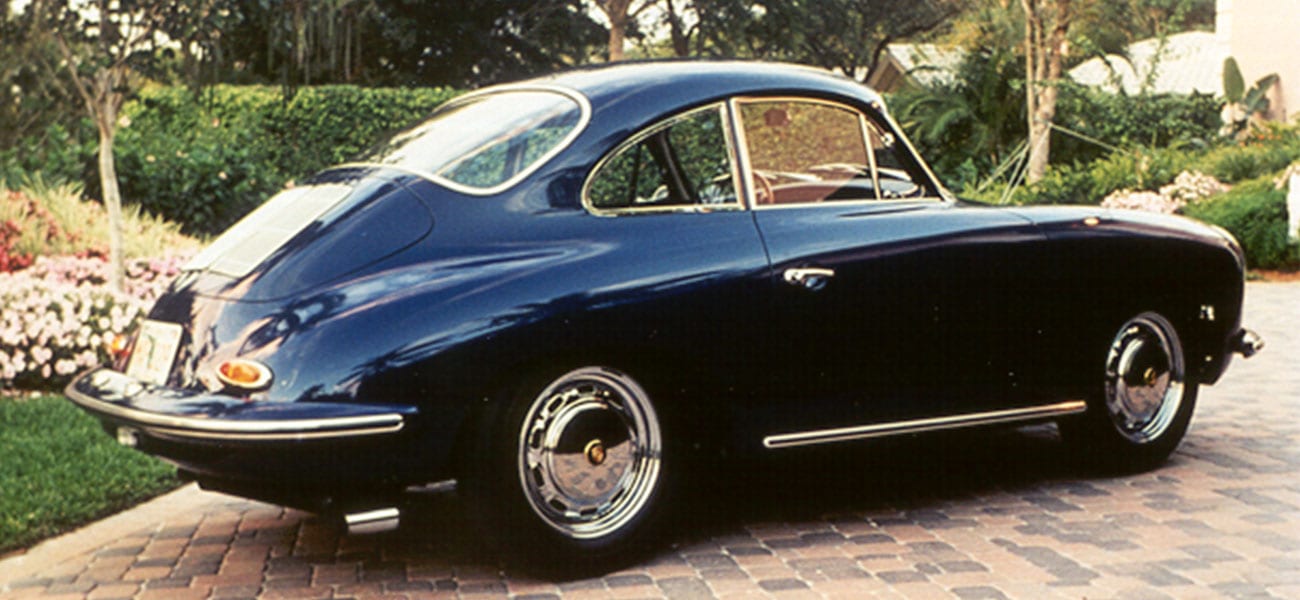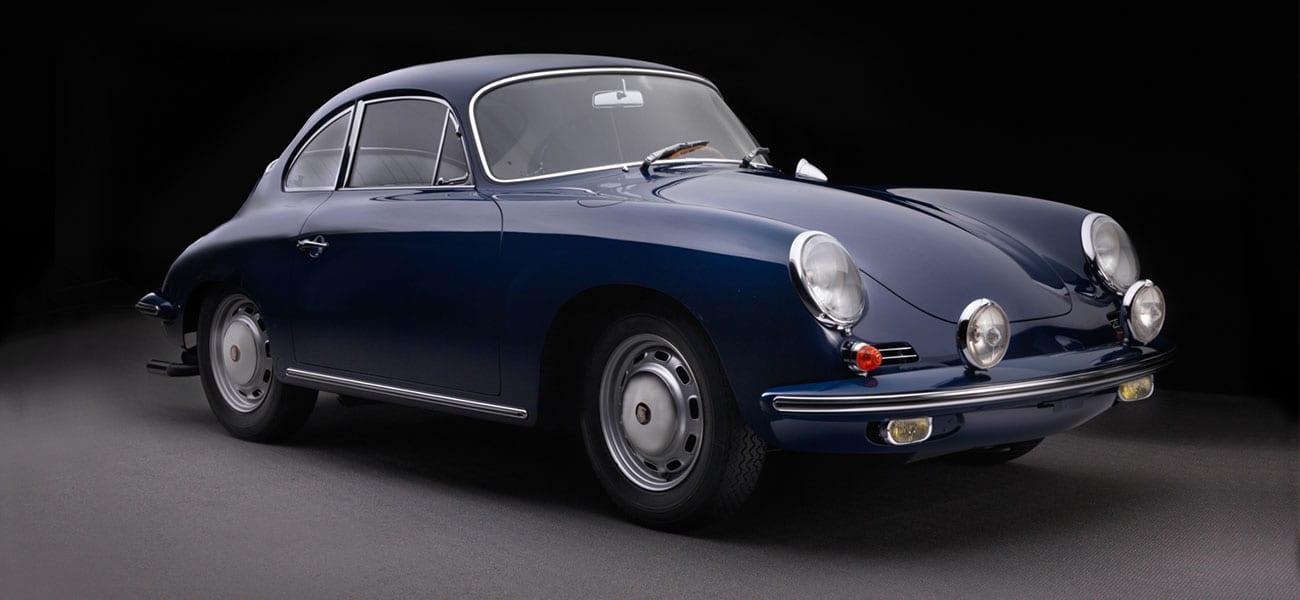Tech Specs
Flat-four air-cooled pushrod engine, rear-mounted, 1582 cc, 95 hp at 5800 rpm.
Before/After
1965 Porsche


About the 1965 Porsche 356C 1600SC Coupe
Upon graduation from secondary school in 1965, Miles Collier was given this 356C brand-new. Successor to the B, A and pre-A models, the 356C was the final development of a series begun a decade-and a-half earlier with the Gmünd coupe (also on display).
Over the years of its production, the 356 did not significantly change in appearance, except perhaps for the “facelift” given the series in 1960. Bumpers and headlights on the new 356B were raised to comply with U.S. requirements, and a large chrome hood handle was fitted. Subsequent model years are almost indistinguishable.
Introduced at the Frankfurt Automobile Show in September 1963, the 356C primarily differed from the B by the elimination of the famous Porsche drum brakes in favor of four-wheel discs, a logical response to the car’s 115 mph top speed. The 356C was available in three configurations: the 75 hp C, the 95 hp SC and the 130 hp two-liter Carrera 2.
The 356 series’ classic appearance belied the intense development program going on under its skin. Through the years the original Volkswagen components had been replaced piece by piece with similar but 100% Porsche-designed parts. The VW-derived 1100 cc engine of 1950 gave way to a 1300, 1500 and ultimately 1600 cc pushrod unit. The Porsche bits themselves often changed year by year as parts were reengineered for better service and reliability. Porsche’s development of the 356 was so thorough that in 1965 dealer warranty work averaged a mere $8.38 per car. At the end of its model life, over 76,000 356s of all stripes had left the Stuttgart factory.
Clever marketing was never needed to sell the 356. The Porsche sold itself to a generation of increasingly sophisticated enthusiasts. Back in the early fifties, Speed Age commented on the progression of automobiles owned by a typical sports car enthusiast: an MG, the quintessential first purchase, followed perhaps by an XK-120 Jaguar, the Jag to be followed by, for anyone seriously interested in driving, a Porsche. And what followed Porsche? Speed Age had no answer. Three decades later, this museum provides one. Certainly no sporting marque in history has commanded more unflinching loyalty than the Porsche.
Photos – Peter Harholdt







